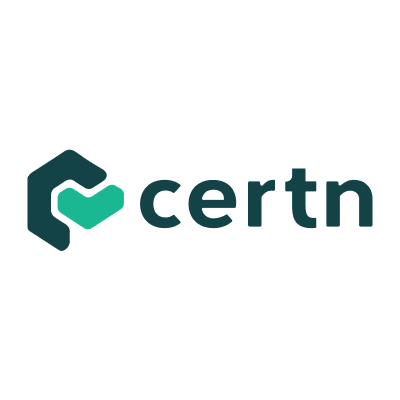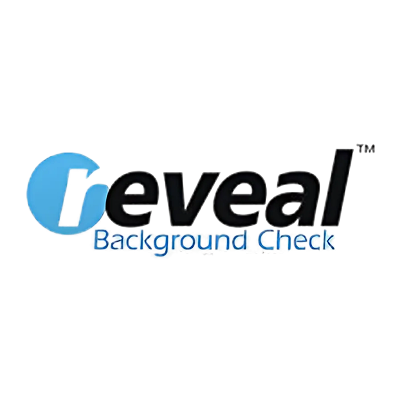Background Checks 101: Your Guide to Foolproof Hiring
Hiring the right talent takes more than strong resumes and first impressions. In high-impact environments where each hire influences business outcomes, you’re building teams that drive innovation, manage risk, and represent your brand. That’s why validating talent through a reliable and well-thought-out background checks framework is essential. It acts as a verification layer between what a candidate claims and what can be confirmed. Whether you’re hiring for leadership, technical, or customer-facing roles, background screening ensures you’re making hiring decisions based on data, not assumptions.
But implementing background checks can often feel like an overwhelming task. Between legal compliances, data accuracy, and process consistency, a background check isn’t just a final formality, it’s a vital layer of verification. It’s a proactive measure to minimize risk, safeguard workplace safety, and protect your brand’s reputation. From validating educational qualifications to screening criminal records, robust checks can reduce costly hiring errors and build a culture of accountability.

With the right structure, technology, and understanding, integrating background checks into your hiring workflow is entirely achievable. Tools like an AI background changer can further streamline processes by automating parts of verification and data management. This guide outlines everything you need to know: the purpose behind background checks, their different types, and how to conduct background checks at scale with technology.
What is a Background Check?
A background check is a structured, step-by-step process employers use to verify a candidate’s professional, educational, and legal history. It helps confirm that the information provided during the hiring process is accurate and complete. This typically includes reviewing prior work experience, academic records, criminal history, professional references, and any industry-specific licenses or certifications the role may require.
In regulated sectors, like healthcare, education, financial services, law enforcement, and transportation, background checks are mandatory under local and federal regulations. For instance, a hospital hiring a nurse must verify the candidate’s nursing license and check for any history of malpractice. Similarly, a bank hiring a financial advisor must screen for financial fraud convictions and ensure compliance with FINRA (Financial Industry Regulatory Authority) regulations.

Background checks not only help identify disqualifying issues like criminal records, but also validate a candidate’s professional credibility. If a candidate claims to have led a global marketing campaign at a Fortune 500 company, a background check can confirm their exact job title, employment period, and responsibilities. If key details don’t match, it could indicate exaggeration or dishonesty, both of which are red flags in hiring.
Key elements typically verified include:
- Past employment roles and timelines
- Academic credentials and certifications
- Criminal history across jurisdictions
- Licenses and regulatory compliance
- Professional references and behavioral patterns
A clear and consistent background check process offers more than just due diligence, it builds a fool-proof foundation of a safe workplace.
Importance of Background Checks in Hiring
Background checks are a strategic layer of risk management. A recent ResumeLab report suggests that 7 in 10 candidates admitted that they exaggerated their qualifications and experience on their resumes to land a job, underscoring the importance of verifying candidate information during hiring. From protecting workplace safety to preventing reputational harm, thorough pre-employment screening helps organizations make smarter, more secure hires. Some of the reasons outlining the importance of background checks are:
These keywords help the tool recognize the candidate’s qualities that employers are looking for. It’s similar to how a search engine works – if your application has the right soft skill terms, it’s more likely to catch attention. Use job-relevant soft skill keywords backed by examples to make your application relevant and discoverable.
1. Regulatory Compliance: Industries like healthcare, education, transportation, and finance are governed by specific laws requiring criminal, identity, and license verifications. Skipping or improperly conducting background checks for these industries can result in non-compliance with federal, state, or local regulations.
For example, FINRA mandates background screenings for brokerage firms. HIPAA-covered employers need to vet healthcare professionals for any history of patient abuse or drug violations. Not meeting these standards can lead to audits, penalties, or even a loss of business license. Many healthcare organizations also perform OIG checks monthly to ensure employees and contractors are not listed on federal exclusion databases. For organizations such as a Healthcare mobile app development company, ensuring compliance with these regulations is critical, especially when handling sensitive patient data or working with regulated institutions.
2. Legal Risk Mitigation: Hiring someone without properly verifying their background can make your company vulnerable to legal consequences. For instance, imagine hiring a delivery driver without validating their driving record, only to later discover multiple past traffic violations after an incident occurs on the job. If a background check could have flagged this earlier, your organization may be held legally responsible for negligent hiring.
A documented, structured background check process, especially one facilitated through automated software, can show the employer took reasonable steps during hiring. This doesn’t just protect you legally, it builds internal accountability. And for organizations aiming to take risk prevention a step further, G2’s operational risk management software reviews can help identify tools that strengthen compliance and safeguard against broader operational threats.
3. Workplace Safety: Your employees want to be assured that they’re working in a safe and secure environment. In roles involving sensitive information, vulnerable populations, or high-trust interactions, companies may screen for prior records that could indicate a risk to workplace safety.
For example, hiring a warehouse supervisor without verifying past workplace misconduct could jeopardize team dynamics and workplace safety. Automated systems can check national and local criminal records and even flag behavioral risks without manual coordination across jurisdictions.
4. Validating Candidate Information: To get to the top of the recruiter’s list, candidates may inflate job titles, extend employment durations, or fabricate educational credentials. While some discrepancies may be unintentional, others can mislead your hiring team and result in poor role alignment or credibility issues down the line.
Verification checks confirm the accuracy of a candidate’s claims, so your hiring decisions are based on truth, not illusion. A thorough verification process checks the authenticity of academic degrees, confirms job titles and tenure with previous employers, and ensures that professional certifications are both current and legitimate. When done consistently and with a clear framework, these checks build internal trust and ensure that your final selections are based on proven merit.
5. Protecting Company Reputation: Your people are a reflection of your brand. An employee’s past conduct, something that could have been flagged during screening, can raise questions about your organization’s hiring practices.
Background checks act as a reputation safeguard. While not all risks are predictable, a thorough background check process can help organizations demonstrate reasonable diligence. Technology tools also help you document that your hiring decisions are grounded in data, not gut instinct.

Types of Background Checks
Reference Checks
To get insights beyond the resume, you perform reference checks. They validate a candidate’s work ethic, performance history, communication style, and potential red flags from people who’ve worked with them during previous employment. Employers typically reach out to direct supervisors, peers, or mentors listed by the candidate, asking structured questions about strengths, challenges, and team fit.

To do this, you can standardize the organization’s reference process by defining a question set that focuses on job-related competencies: leadership, adaptability, conflict resolution, and reliability. For instance, ask: “How did this person respond under pressure during a critical project?” The goal is to get job-relevant insights and look for positive patterns and potential gaps that can help compare candidates objectively.
Qualification Verification
Employers perform qualification verification to confirm that a candidate’s educational claims, including degrees, diplomas, certifications, or academic honors, are valid and awarded by accredited institutions. It ensures that candidates truly possess the foundational knowledge required for the job. Incorrect or fabricated qualifications can lead to real-world consequences, from compliance violations to operational failures. Beyond degrees, verification of professional development programs and relevant certifications (e.g., PMP, AWS, or CPA) is also crucial where such programs are required to perform well on the job.
Qualification checks can also reveal issues such as:
- Degrees from unaccredited or fraudulent institutions
- Incomplete programs are listed as completed
- Credentials claimed but never earned
- Outdated certifications that are no longer valid or applicable
Criminal Background Check
A criminal background check is one of the most critical components of the screening process. It typically includes national, state, and county-level checks, and may even include global records, depending on the role. The goal isn’t just to reject candidates with any record, but to assess relevance, recency, and severity. For example, a non-violent misdemeanor from five years ago might not be relevant for a marketing analyst, but a recent financial fraud conviction would be a red flag for an accounting role.
Employers must also ensure that these checks are conducted in compliance with Equal Employment Opportunity Commission (EEOC) guidelines and local laws. Criminal checks also serve as a filter for roles involving customer data, minors, or sensitive transactions. In those settings, missing a red flag can have serious implications for safety, reputation, and liability. Moreover, thorough screening helps mitigate risks related to trade finance fraud by ensuring employees handling financial documents and transactions have a trustworthy background.
Employment History Verification
Employment history verification strengthens hiring decisions that rely on work experience. This ensures a candidate’s stated history matches reality, including job titles, responsibilities, and tenure. It also reveals gaps or inconsistencies in employment timelines that might need clarification.
A comprehensive employment history check involves contacting previous employers to confirm dates, job functions, and rehire eligibility. In some cases, it may also provide insight into why the candidate left and whether performance issues were involved.
If a candidate claims to have led cross-functional teams in a previous project management role, employment verification can help confirm their scope of responsibilities. The added context can help you get a clearer picture of the candidate’s experience and whether it aligns with the expectations of the role you’re hiring for.
License Checks
In regulated professions, including healthcare, law, real estate, or construction, license verification is critical. This is to ensure the candidate holds valid licenses to perform their role competently. The same careful verification is also important in growing fields connected to housing, including tiny homes for sale Hawaii, where compliance and safety standards must be met In real estate finance, too, working with the best DSCR loan lenders requires similar attention to compliance – making sure both the borrower and lender follow proper regulations. Real estate recruitment also demands careful attention to licensing, experience, and skills to ensure success in projects.
It involves confirming the license’s authenticity, status (active, expired, suspended), issuing body, and a record of disciplinary conduct. It’s particularly important for roles where misconduct could pose workplace security risks, like hiring a nurse without verifying their active RN license. Similarly, verifying an electrician license helps confirm that the electrician’s state certification is up-to-date and valid. In addition, understanding the available floor plans can help assess whether professionals involved in housing projects are capable of meeting design and safety requirements. The goal of license checks is not only to ensure compliance with industry regulations but also to support safe, qualified hiring decisions
Make Your Background Checks Technology-Powered
Manual background checks are no longer viable in modern hiring, where speed, compliance, and data accuracy are non-negotiable. As recruitment cycles accelerate and candidate volumes increase, background checks must evolve into smart, scalable workflows.
To modernize your background checks, the key is to replace scattered, manual processes with a unified, technology-backed workflow. It means building a consistent system that integrates background screening into your end-to-end hiring pipeline.
Here’s how recruiters can make background checks tech-powered:
1. Integrate Background Check Software Into Your Hiring Platform
To streamline background checks, integrate a background check software, such as CocoFinder, directly into your existing hiring platform. By embedding background check workflows into the unified interview experience, recruiters can trigger, track, and manage screenings without leaving the platform. You can initiate background checks automatically based on stage progression. For example, a reverse image search tool that offers an API feature could be a great solution. Thanks to this, you can easily search by image and find relevant information about a specific candidate.
Once the candidate’s data is collected, the platform sends it directly to your integrated background check provider. This eliminates the need for manual entry or file sharing and ensures that all documentation, such as consent forms and ID proofs, is securely stored and easily traceable. Using this unified approach, you reduce errors, speed up decision-making, and maintain a secure, auditable trail for compliance.
2. Simplify Consent Collection and Compliance
Background checks must meet legal standards like the FCRA (Fair Credit Reporting Act) and EEOC guidelines. Modern tools handle this by automatically requesting digital consent from candidates and maintaining compliant audit trails.
Instead of manually emailing forms or worrying about missing disclosures, platforms let you configure consent workflows: once a candidate reaches a certain stage in the pipeline, the system prompts them to sign and submit legally required documents. This helps recruiters stay compliant without constant oversight.
3. Customize Screening Packages by Role
Different roles call for different levels of verification. A financial analyst may require credit checks and fraud screenings, while a warehouse associate may need driving record verification. With tech-powered systems, you can standardize and group background checks based on job type or job trial seniority, or location.
For example, you might categorize checks in different packages:
- Standard Package: Identity verification + employment history
- Mid-Level Package: Adds education verification + basic criminal check
- Executive Package: Includes global sanctions check, reputation scan, and license verification
This modularity helps avoid unnecessary checks while ensuring thorough screening where it matters.
4. Centralized Reporting and Audits
Without a centralized system, documentation can easily become fragmented, scattered across emails, PDFs, spreadsheets, or offline notes. By automating technology-backed background checks, you create a central repository where every piece of candidate verification data is collected and maintained.
This helps you:
- Get automatic results when a verification step is completed (education, employment, criminal check).
- Format background check results into structured, review-ready summaries. These reports categorize each verification, note any discrepancies, and present findings in a standardized way.
- Many organizations also use solutions like API Template’s HTML to PDF tool to automatically convert digital reports into shareable, secure PDF formats for audits and compliance documentation. This, in turn, highlights the need for a reliable PDF hosting solution to ensure these sensitive documents are stored securely and are readily accessible for review.
- Create systematic storage and access of every action, when a check was initiated, when it was viewed, and who approved it. These logs ensure transparency and are vital during internal reviews or external compliance audits.
When background checks are tech-driven and automated, you’re not just saving time, you’re minimizing risk, elevating candidate experience, and freeing up your hiring teams to focus on what matters: selecting the right people.
Software to Consider for Automating Background Checks
1. Checkr

Checkr is one of the most widely adopted platforms in modern hiring, known for its user-friendly interface and API integrations. It offers a broad spectrum of checks, from criminal records and motor vehicle reports to education and employment verification.
Checkr also uses machine learning to reduce bias by filtering irrelevant records based on role and severity. You can customize packages and access detailed compliance guidance per location. For enterprises hiring in volume, Checkr is scalable, transparent, and compliant with FCRA standards.
2. VerifiedFirst

VerifiedFirst provides on-demand screening solutions that integrate directly into your ATS. What sets it apart is its simplicity, drag-and-drop configuration, and real-time status tracking.
The platform offers criminal checks, reference verifications, drug testing, and I-9 verification. Its fast turnaround and mobile-first features help speed up decision-making without compromising accuracy or legal compliance.
3. Certn

Certn specializes in fast, global background checks. Its AI-powered system provides criminal record checks, identity verification, and employment verification across more than 200 countries and territories. You receive real-time alerts and can view compliance scores on the user-friendly mobile app, which are especially useful when hiring internationally.
4. OnGrid

OnGrid is designed for high-volume and frontline hiring, making it a popular choice for manufacturing, retail, and logistics companies. It supports education, employment, criminal, and police verification checks with rapid API integration into hiring platforms like Jobma.
OnGrid offers built-in consent management and multilingual candidate dashboards, essential for companies hiring across diverse workforces in multiple geographies. It also allows you to customize the weight of each background check component to align with specific job requirements.
5. Reveal

Reveal offers candidate background insights with a focus on minimizing unconscious bias. Its AI tools rate risk levels and present a clear report on red flags. Reveal is particularly suited for companies concerned with brand safety, executive hiring, or client-facing roles where reputation is paramount. The insights are digestible, helping HR teams make nuanced decisions without manual research.
6. Vetty

Vetty helps automate identity verification, driver record checks, and employment verification, all from a single dashboard. What makes Vetty stand out is its candidate-centric approach. It offers candidates real-time tracking of their background check status and allows two-way communication if documents or clarifications are needed. This transparency helps reduce candidate anxiety and improves drop-off rates in the hiring pipeline.
Conclusion: Endnotes
Background checks aren’t just a box to tick at the end of your hiring process, they’re a core part of building a secure, high-performing organization. In a hiring landscape defined by remote work, rapid scaling, and global compliance risks, outdated or manual screening processes can slow you down and expose your organization to avoidable liabilities. It’s no longer about whether you screen candidates, it’s about how effectively you do it.

Manual reviews, fragmented workflows, and delayed results don’t cut it anymore, especially when candidates expect instant updates and compliance standards keep tightening. HR teams are rapidly shifting away from traditional models toward automated, candidate-friendly background check systems that adapt to their scaling hiring efforts. By incorporating Human Risk Management strategies, organizations can leverage AI to prioritize risk, flag potential issues early, and make faster, better-informed decisions.
- Audit your current background check experience for both recruiters and candidates. Where are you slowing down?
- Identify opportunities to embed automation and reduce manual effort.
- Choose solutions that offer insights, speed, and scalability.
The goal isn’t just risk mitigation, it’s to create a hiring engine that’s fast, compliant, and built for growth. Future-ready teams don’t just screen candidates, they optimize how it’s done.




